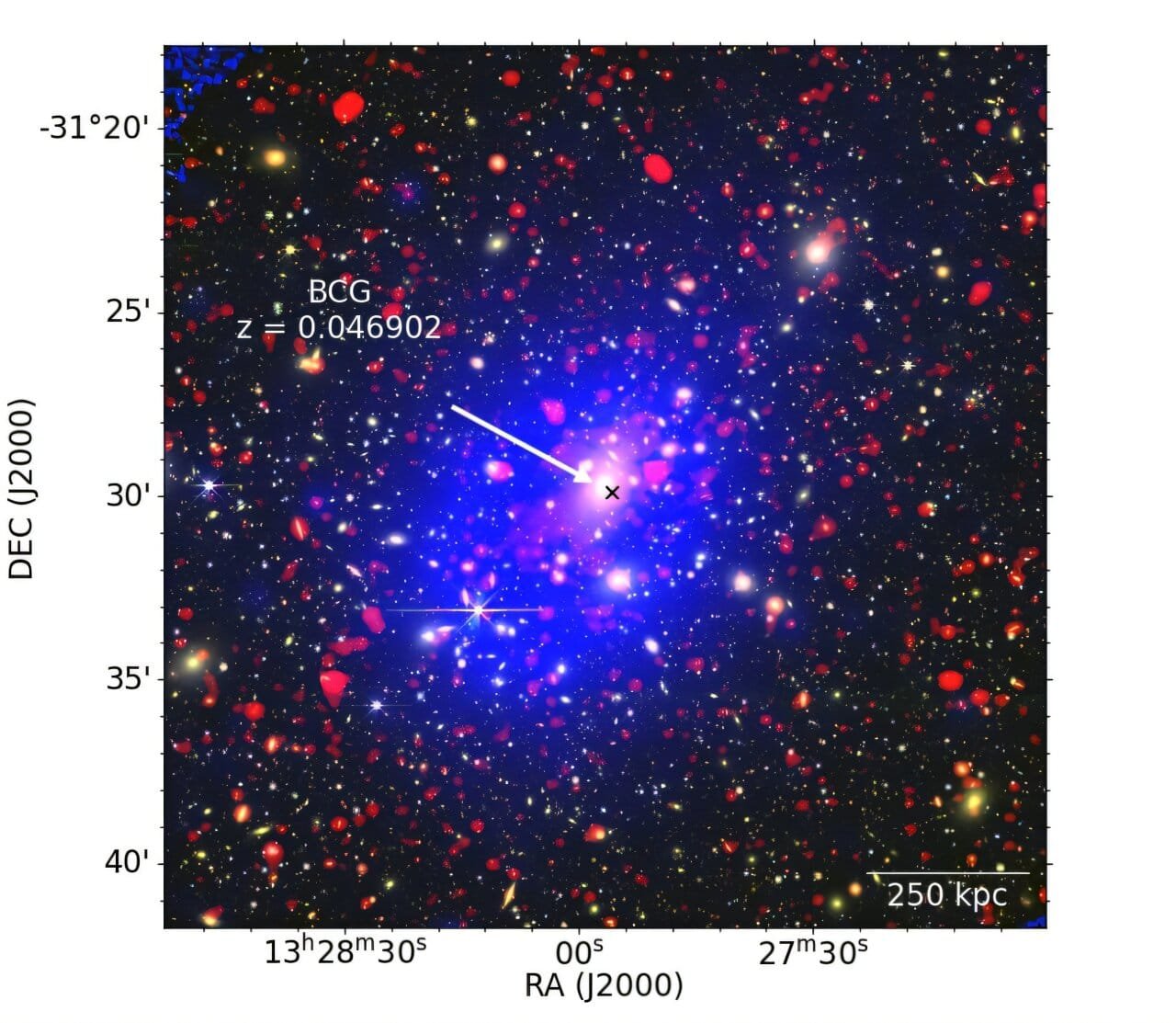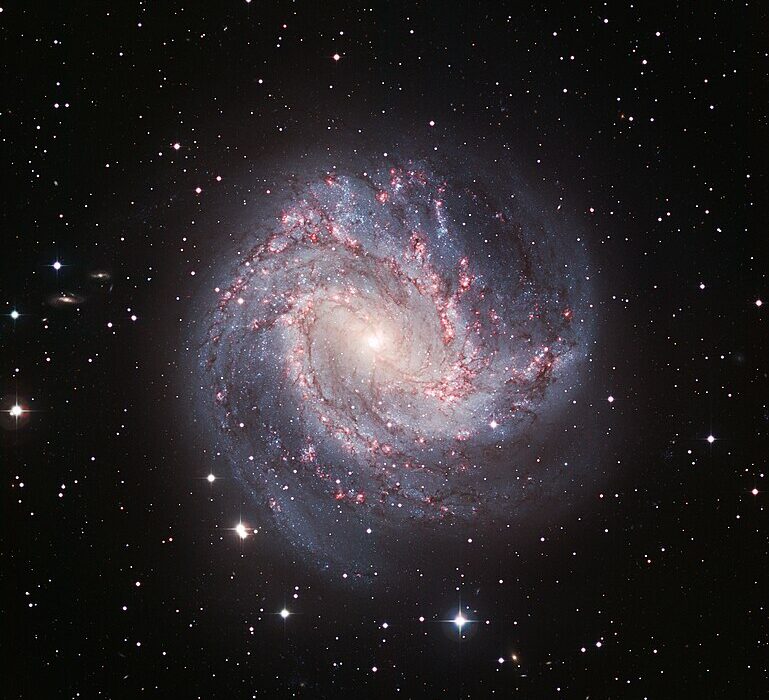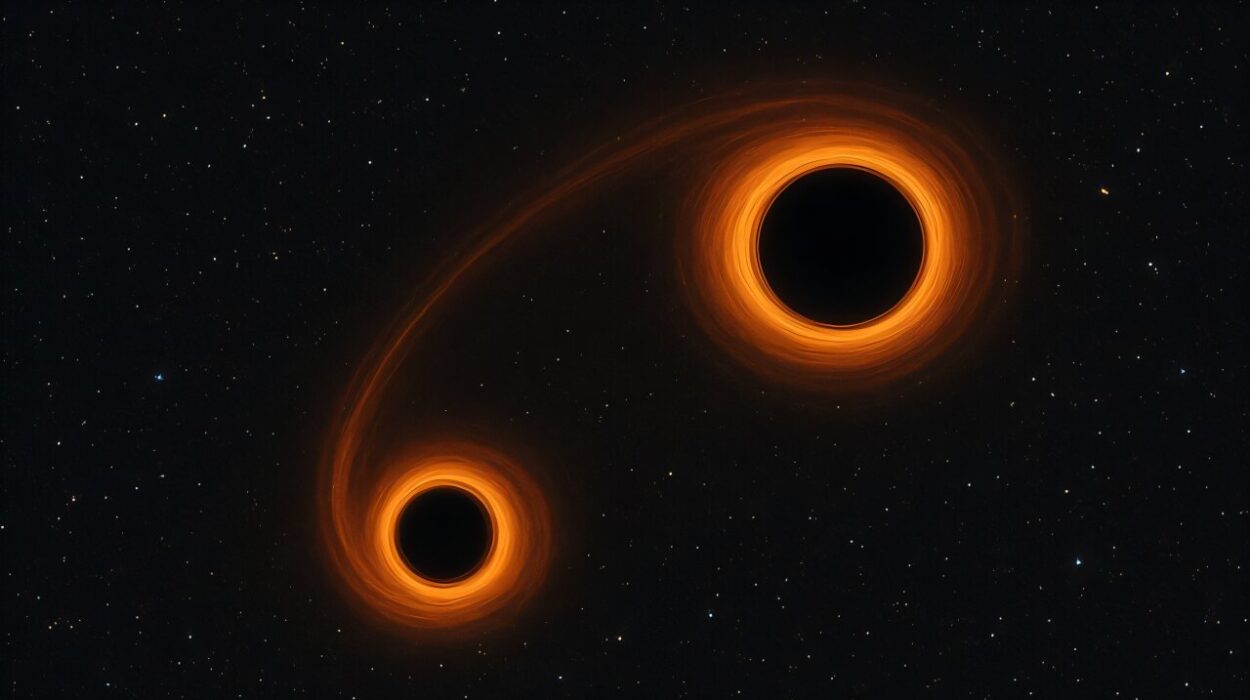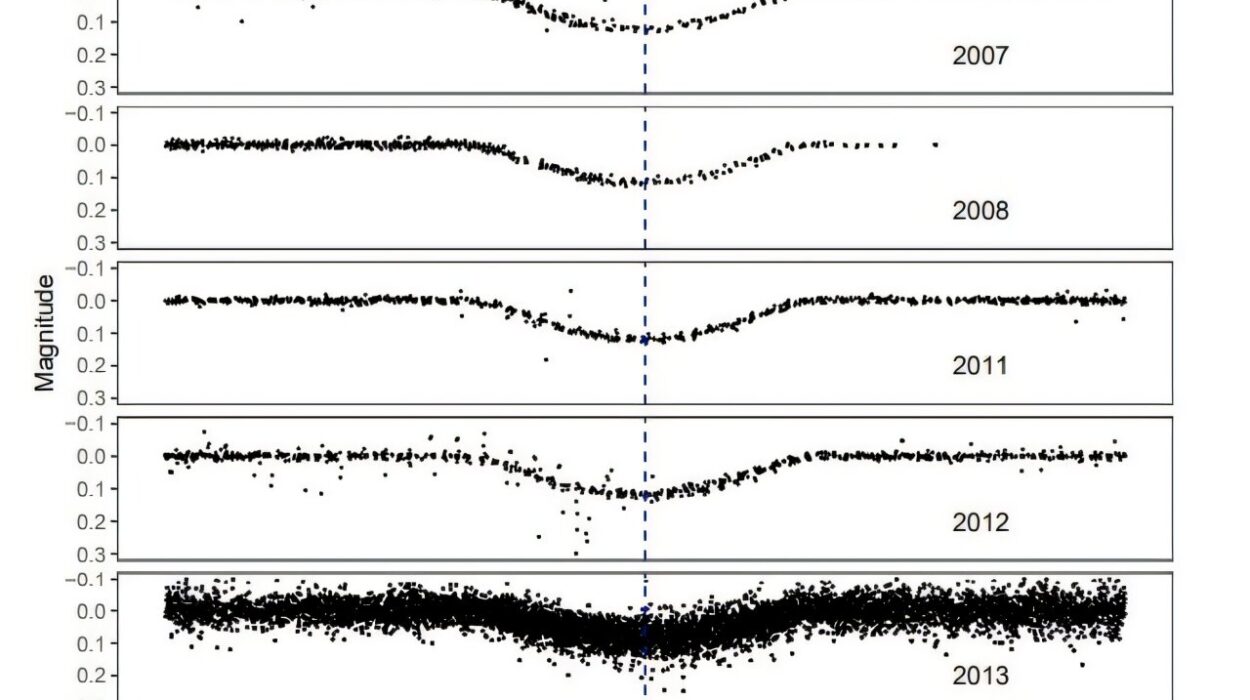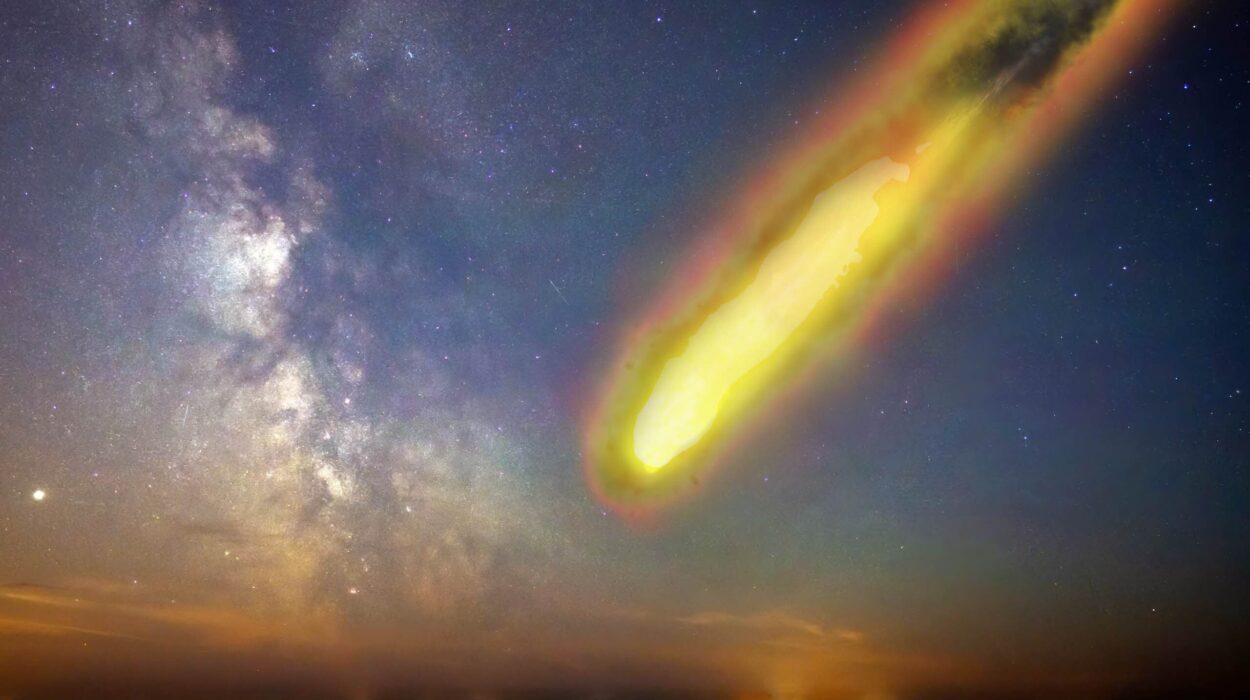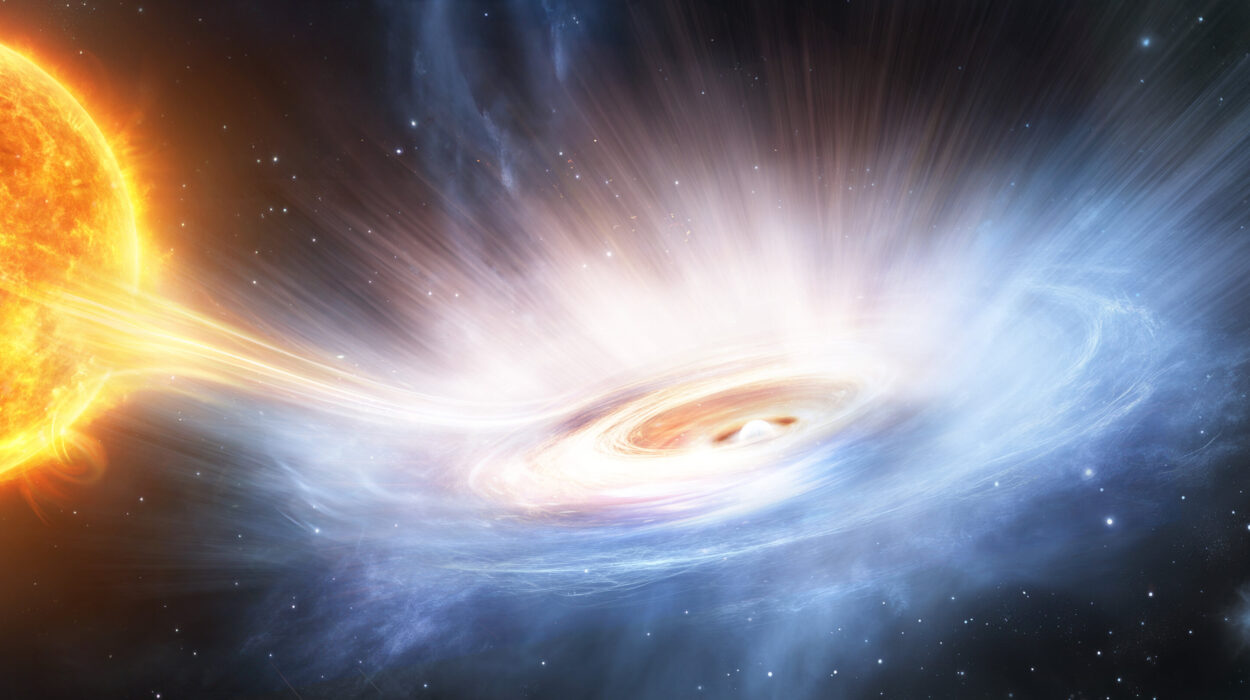Out in the vast, black silence of space—beyond the shimmering filaments of galaxies and the scattered fires of stellar nurseries—there lies a cluster of cosmic giants bound together by an invisible force. These galaxy clusters, the most massive gravitationally bound structures in the known universe, are more than collections of stars. They are realms of gas, magnetism, dark matter, and motion, constantly churning with energy.
One such cluster is Abell 3558, a mammoth gathering of galaxies located over 650 million light-years from Earth in the heart of the Shapley Supercluster. It’s not just enormous—it’s ancient, mysterious, and remarkably dynamic. And now, thanks to a collaboration of astronomers across the globe, it has revealed a strange and quiet phenomenon tucked within its heart: a peculiar radio mini-halo, a vast veil of faint radio emissions woven by turbulence, time, and gravity.
This unexpected discovery, published in a recent study led by Keegan Trehaeven of Rhodes University, invites us to look deeper into the hidden forces at work in these cosmic leviathans—and to rethink what we thought we knew about the nature of galaxy clusters.
The Invisible Glow of Radio Silence
Abell 3558 is no stranger to astrophysical curiosity. With a mass tipping the scale at around 1.48 quadrillion times that of our sun and an X-ray luminosity radiating at a blinding 700 tredecillion ergs per second, it’s long been a subject of interest for astronomers studying the universe’s large-scale structure. Yet even with all this attention, a subtle hum had gone mostly undetected.
That hum, it turns out, is the diffuse radio emission emanating from the cluster’s core—a ghostly glow invisible to our eyes but vivid to radio telescopes. Earlier observations had hinted at its presence, but it was only with the recent deployment of the MeerKAT telescope in South Africa and the Upgraded Giant Metrewave Radio Telescope (uGMRT) in India that its full extent and complexity became clear.
Trehaeven’s team combined deep observations at multiple frequencies, ranging from 400 MHz to 1,283 MHz, drawing data from some of the most powerful radio eyes on the planet—including the Australian Square Kilometre Array Pathfinder (ASKAP). Their goal was ambitious: to unravel the tangled origins of the radio emissions and determine what sort of physical processes were at work behind them.
What they found was not just fascinating—it was unprecedented.
A Halo Unlike Any Other
As the data came together, a picture began to emerge. The central region of Abell 3558 was not merely glowing—it was alive with structured, low-frequency radio emission, forming a feature known in the astronomical world as a radio mini-halo. These phenomena are incredibly rare and notoriously difficult to detect. Unlike the enormous radio halos produced by massive galaxy cluster mergers, mini-halos are subtle, softly glowing structures confined to the central regions of clusters.
The mini-halo in Abell 3558 stretches an estimated 1.8 million light-years across—far more extended than earlier maps had revealed. Its radio power at 1.4 GHz measures an impressive 68 zettawatts per hertz (ZW/Hz), and its spectral index, a measure of how the emission fades across frequencies, hovers at a value of 1.18—indicating an aging population of cosmic particles being revived through subtle processes.
Within this mini-halo, a region of flatter spectral index—that is, a zone where the radio waves lose power more slowly—appears just inside an X-ray feature known as a cold front, a sharp boundary in the cluster’s hot gas. This suggests the presence of local turbulent re-acceleration, where electrons are being re-energized by the chaotic motion of gas stirred by internal cluster dynamics.
Beyond this inner shell, the spectral map shifts. A steeper spectrum appears, rising from an X-ray cavity that’s paradoxically hotter and less pressurized than its surroundings. It’s a cosmic riddle: what kind of energy is sustaining this emission, and why is it organized this way?
The Ghosts of Sloshing Gas
At the heart of this mystery lies a physical process known to astrophysicists but poorly understood: gas sloshing. Picture a vast ocean of superheated plasma, held in place by gravity but disturbed by ancient gravitational encounters. As smaller substructures fall into the cluster—dwarf galaxies, gas clouds, or dark matter halos—they ripple the intracluster medium like a stone tossed into water. This motion doesn’t end quickly. It oscillates, rebounds, and stirs the core of the cluster over hundreds of millions of years.
Gas sloshing is not violent like a collision. It is subtle, layered, and enduring. And it can generate turbulence—enough, it seems, to revive populations of relativistic electrons and create the faint, glowing fabrics we detect as mini-halos.
In the case of Abell 3558, the mini-halo appears to be confined by cold fronts—an observational feature that strongly points to gas sloshing as its power source. Yet the structure is not perfectly symmetric. There is a ridge-like extension stretching out along the cluster’s main axis, aligned with a known trail of low-entropy gas, possibly a leftover from past mergers or accretion events.
This ridge adds another layer to the puzzle. It may suggest that larger-scale sloshing, or even feedback from an active galactic nucleus (AGN) in the cluster’s central galaxy, has helped stir the pot. Whatever the cause, it’s clear that the dynamics of the cluster core are far more complex and long-lived than previously assumed.
A Tale of Turbulence, Not Catastrophe
What makes this discovery especially intriguing is the nature of Abell 3558 itself. This is not a wildly disturbed cluster undergoing a major merger. It is what astronomers describe as dynamically relaxed—a calm, cool-core system without recent violent disruptions. Yet here, in this relatively peaceful environment, lies a complex network of radio emission usually associated with more chaotic conditions.
This flips part of the existing paradigm. It suggests that even relaxed clusters can harbor significant turbulence—enough to produce and sustain mini-halos. It also supports the theory that mini-halos are not just relics of violence, but rather, products of prolonged and subtle processes like sloshing and AGN feedback.
This, in turn, deepens our understanding of how matter behaves in the largest gravitational wells in the universe. It suggests that over timescales of hundreds of millions of years, turbulence can act as a form of cosmic weather, stirring and re-energizing plasma like storms in an unseen ocean. And just as Earth’s weather can leave lasting imprints, these cosmic eddies carve out halos of radiation, silently glowing in radio waves across intergalactic space.
A New Frontier in the Study of Mini-Halos
While the mini-halo in Abell 3558 is now one of the most detailed ever studied, it also opens more questions than it answers. What are the precise roles of AGN feedback, turbulence, and magnetic fields in sustaining these structures? How common are mini-halos in other clusters that appear relaxed on the surface? And could such features serve as indirect tracers of hidden dynamics like slow mergers or dark matter substructure?
Future observations, especially with upcoming instruments like the Square Kilometre Array (SKA), may provide the sensitivity needed to detect mini-halos in many more clusters. Already, telescopes like MeerKAT and uGMRT are pushing the boundaries of what we can see—and forcing us to rethink how energy flows, not just within galaxies, but across the universe’s largest scales.
Trehaeven’s team emphasizes that multi-band, high-resolution radio observations are essential for decoding the nature of diffuse emissions in clusters. Their approach—layering data from several instruments and frequencies—may become a blueprint for future explorations of mini-halos and other subtle features in the cosmic web.
In the End, the Universe Murmurs
What the mini-halo in Abell 3558 ultimately teaches us is that the universe speaks in more than just explosions and collisions. It also murmurs, in the low-frequency language of radio waves, telling stories of slow movement, persistent turbulence, and hidden structure.
Where once astronomers looked only for the loud, the bright, and the violent, they now learn to listen for the quiet. In these whispers of radiation—soft, structured, and ancient—we find the fingerprints of time itself: of gas stirred for hundreds of millions of years, of electrons dancing through magnetic fields, of clusters evolving not in moments but in epochs.
The peculiar mini-halo at the heart of Abell 3558 is not just a curiosity. It is a signpost on the road to deeper understanding. It reminds us that the cosmos is full of invisible architecture—woven not only by gravity and light, but by the subtle and persistent touch of turbulence, time, and the unknown.
Reference: K. S. Trehaeven et al, The Peculiar Mini-Halo in the Shapley Supercluster Member Abell 3558, arXiv (2025). DOI: 10.48550/arxiv.2507.07549
